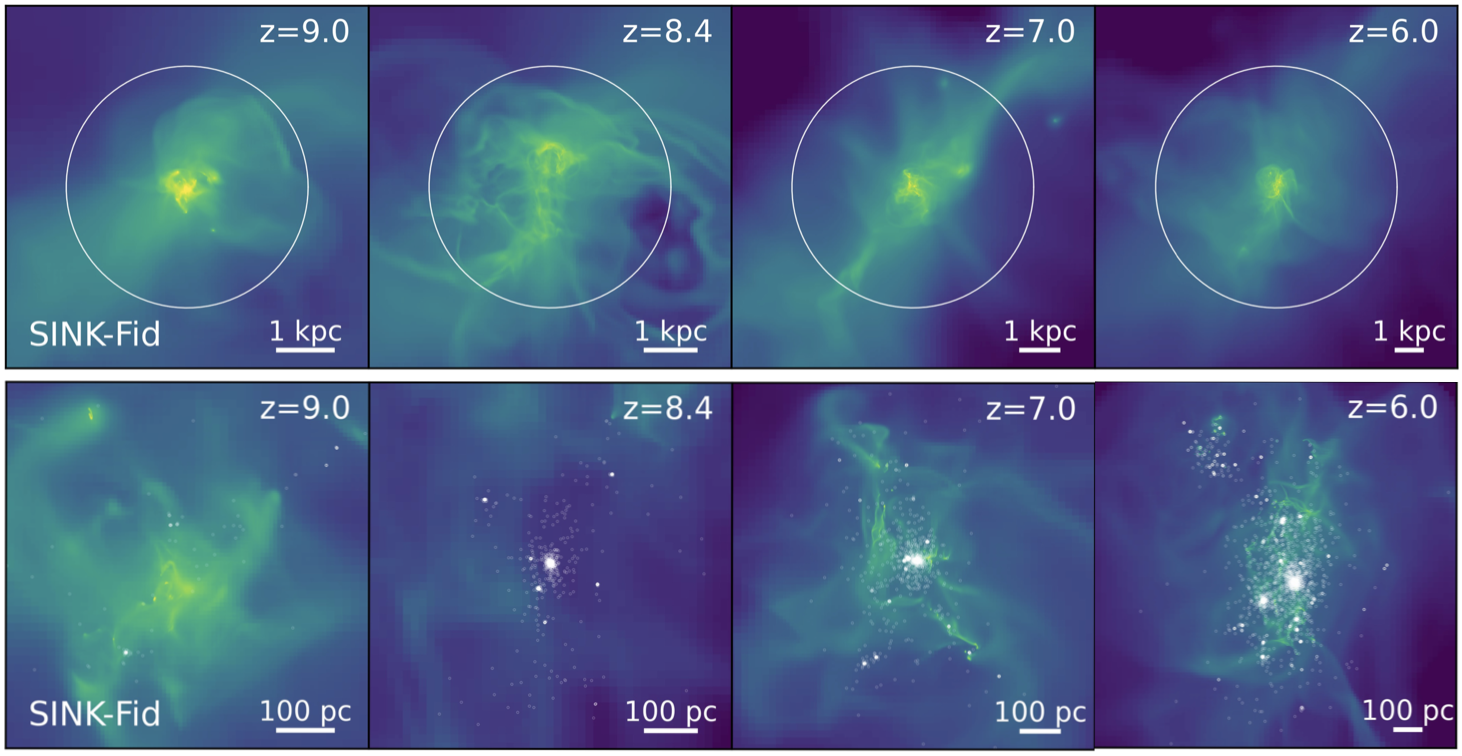| Date |
|
| 27 Apr - 1 May 2026 |
RAMSES user meeting 2026, Yonsei |
| 15 - 17 Oct 2025 |
2025 Fall KAS meeting, Jeju |
| 25 - 29 Aug 2025 |
Galaxy Evolution Workshop, Nagoya, Japan |
| 19 - 25 Jul 2025 |
Collaborative visit, Lyon, France |
| 14 - 18 Jul 2025 |
18th Potsdam Thinkshop, Potsdam, Germany |
| 26 - 30 May 2025 |
International Workshop on Galaxy Formation+AGORA in Asia 2025, Osaka, Japan |
| 26-30 Aug 2024 |
NewCluster Workshop, Yonsei/Gangneung |
| 6-9 Aug 2024 |
10th Galaxy evolution workshop, Taiwan |
| 14 May 2024 |
Mini-workshop on Numerical Galaxy Formation, Yonsei |
| 18-20 Oct 2023 |
108th Korean Astronomical Society Meeting, Jeju |
| 16-18 Aug 2023 |
Dwarf Galaxy Workshop, KASI |
| 12-14 Apr 2023 |
107th Korean Astronomical Society Meeting, Jeonju |
| 10-13 Jan 2023 |
NGF+Darwin Workshop, Gonjiam |
| 10-12 Nov 2022 |
Cascade Workshop on Galaxy Formation, Gangneung |
| 6-10 Nov 2022 |
Workshop on Galaxy formation and reionization, Yonsei |
| 12-14 Oct 2022 |
Korean Astronomy Society (#106) Fall Meeting, Gyeongju |
| 8-11 Aug 2022 |
IAUGA, Busan |
| 13-15 July 2022 |
CGER1 Kick-off meeting, Gangneung |
| 18-20 May 2022 |
Intensive Writing Workshop, Incheon |
| 13-15 Apr 2022 |
Korean Astronomy Society (#105) Spring Meeting, Busan, South Korea |
| 22-23 Feb 2022 |
Environment Workshop 2022 (Online) |
| 25 Jan 2022 |
3rd Numerical Galaxy Formation Workshop (Online) |
| 13-15 Oct 2021 |
Korean Astronomy Society (#104) Fall Meeting, Jeju, South Korea |
| 1 Aug 2021 |
Hyunmi Song was offered (and accepted) an assistant professorship at Chungnam National University |
| 16 Apr 2021 |
Suhyeon Choe (KAS #103) - Best Poster Award (2nd place) |
| 15-16 Apr 2021 |
Korean Astronomy Society (#103) Spring Meeting, South Korea |
| 9 Feb 2021 |
Environment Workshop 2021 (online) |
| 2-5 Feb 2021 |
RASCAS/SPHINX/TRIPLE Workshop |
| 28 Jan 2021 |
2nd Numerical Galaxy Formation Workshop |
| 2-6 Nov 2020 |
9th KIAS workshop on Cosmology and Structure Formation |
| 15-16 Oct 2020 |
#102 KAS online meeting |
| 16-18 Jun 2020 |
SPHINX/RASCAS/TRIPLE online meeting |
| 13-22 Apr 2020 |
Collaborative visit: Prof. Adrianne Slyz & Julien Devriendt (cancelled) |
| 8-10 Apr 2020 |
#102 KAS Meeting in Jeju (cancelled) |
| 16-20 Mar 2020 |
RASCAS-SPHINX meeting in Lyon, France (cancelled) |
| 10-12 Feb 2020 |
Survey Science Group Workshop in Jeongsun, Korea |
| 16 Jan 2020 |
Numerical Galaxy Formation mini-Workshop at SNU |
| |
| 19 Nov 2019 |
Yonsei-IAP workshop on Galaxies and Clusters |
| 28 - 30 Oct 2019 |
Collaborative visit: Dr. Tiago Costa (MPA, Garching) |
| 16-18 Oct 2019 |
Taehwa Yoo (KAS #101) - Best Poster Award (1st place) |
| 30 Sep - 3 Oct 2019 |
2019 RAMSES User Meeting in Copenhagen |
| 1 - 4 Jul 2019 |
2019 GEMSCADE Workshop on the Numerical Modeling of Galaxies |
| 7 May 2019 |
Mini-workshop on Numerical modeling of Galaxy Formation and Evolution (NUGA) |
| 7 - 15 May 2019 |
Collaborative visit: Dr. Harley Katz (Oxford) |
| 7 - 10 May 2019 |
Collaborative visit: Dr. Joakim Rosdahl (CRAL) and Maxime Tresbitsch (IAP) |
| 10 - 12 April 2019 |
100th KAS meeting (Spring) |
| 23 - 25 Jan 2019 |
Lyman alpha workshop at Sejong University |
| 22 - 23 Jan 2019 |
Galaxy Formation Workshop at Yonsei University |
| 4 - 9 Nov 2018 |
8th KIAS workshop in Seoul |
| 2 Nov 2018 |
Mini-workshop on galaxy evolution with Prof. Christophe Pichon |
| 22 - 26 Oct 2018 |
EANAM8 in Taiwan |
| 11 - 12 Oct 2018 (tbc) |
2018b KAS in Cheongsong |
| 17 - 19 Sep 2018 |
2018 RAMSES User Meeting in Lyon |
| 8 - 16 Sep 2018 |
Collaborative visit: Dr. Harley Katz (University of Oxford) |
| 8 - 13 Jul 2018 |
Collaborative visit: Dr. Yohan Dubois (IAP) |
| 29 May 2018 |
2018 Yonsei-Oxford Galaxy Evolution Symposium |
| 26 May - 3 Jun 2018 |
Collaborative visit: Prof. Julien Devriendt and Adrianne Slyz (University of Oxford) |
| 9 - 11 May 2018 |
2018 Spring KAS meeting in Hongcheon, South Korea |
| 12-13 Oct 2017 |
Korean Astronomy Society (KAS) Meeting in Yeosu, South Korea |
| 1 Sep 2017 |
Prof. Taysun Kimm joined the Department of Astronomy |
| |
|

